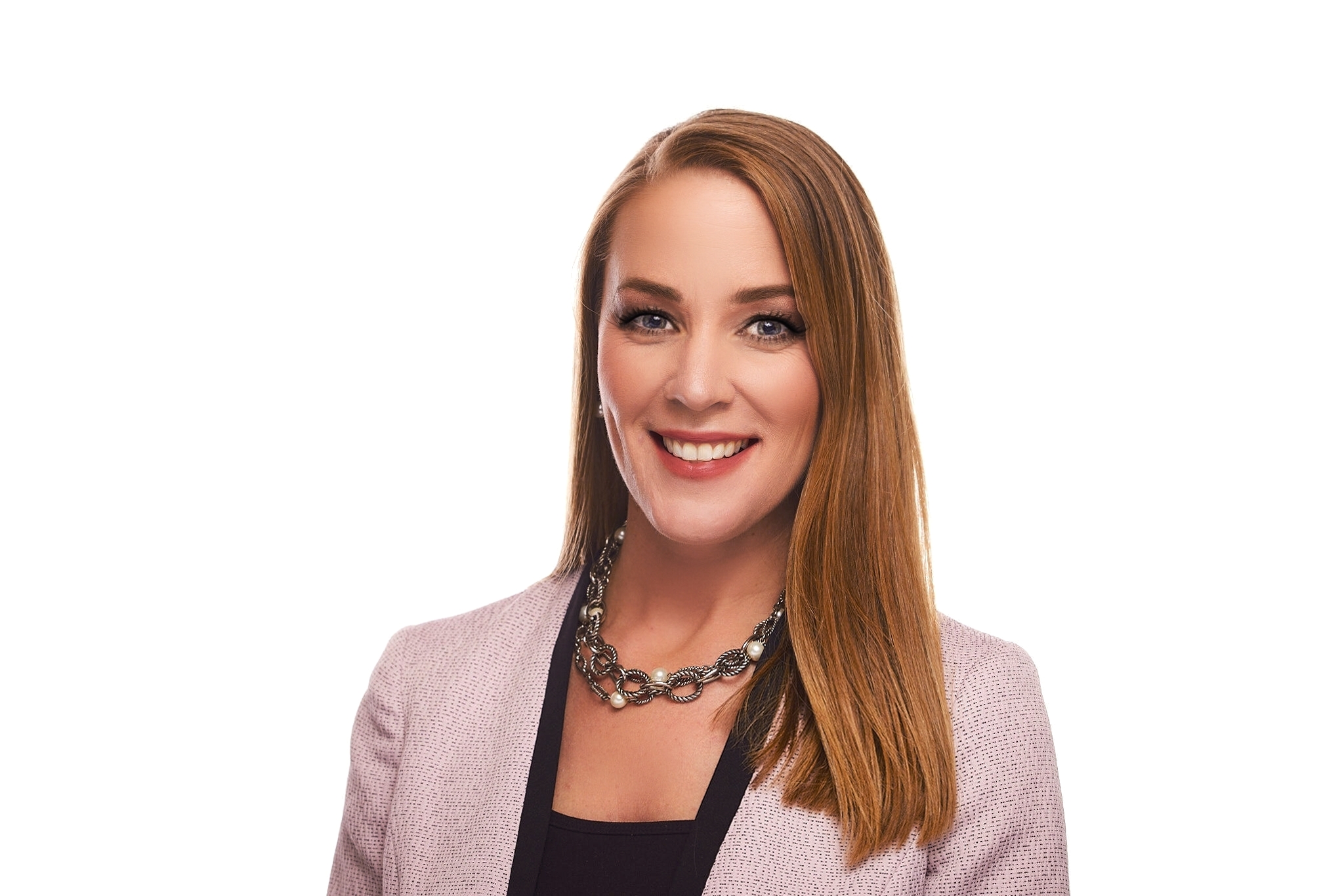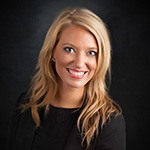A Conversation with Paychex Executives
Amid a workforce shortage, companies are looking for effective strategies to recruit and retain the best workers. Solutions start with the recognition that the workforce itself is changing.
 NIC COO Chuck Harry recently talked with two executives at Paychex about how senior living providers can address staffing challenges based on an understanding of what today’s workers want and expect. Here is a recap of his conversation with Paychex’s Kate Risa, strategic accounts consultant, and Brittany Riese, HR business partner.
NIC COO Chuck Harry recently talked with two executives at Paychex about how senior living providers can address staffing challenges based on an understanding of what today’s workers want and expect. Here is a recap of his conversation with Paychex’s Kate Risa, strategic accounts consultant, and Brittany Riese, HR business partner.
Harry: For those who may not be familiar with Paychex, please share with us an overview of the company and your offerings for stakeholders in senior living.
 Risa: Paychex is a huge organization. We pay one in every 12 private sector employees. We are also well integrated into the small and medium business arena. We have a dedicated senior living team that’s been around for 10 years, working exclusively with the industry. We work with more than 1,200 owner operators, management groups and developers across the country on a variety of HR functions and processes. We are more than a payroll company. We can manage HR functions to allow managers to devote more time to their staff and their residents. Some of our services include employee onboarding, industry compliance, salary analysis, brand building, employee motivation and engagement strategies, and other HR functions. Our team knows the industry. They understand what AL means. They understand what it means when regulators walk through the door. Our senior living HR team is integrated into the operations of the community. For example, we might help the executive director with an employee issue, or work with the regional team or CEO to analyze worker data to spot new trends.
Risa: Paychex is a huge organization. We pay one in every 12 private sector employees. We are also well integrated into the small and medium business arena. We have a dedicated senior living team that’s been around for 10 years, working exclusively with the industry. We work with more than 1,200 owner operators, management groups and developers across the country on a variety of HR functions and processes. We are more than a payroll company. We can manage HR functions to allow managers to devote more time to their staff and their residents. Some of our services include employee onboarding, industry compliance, salary analysis, brand building, employee motivation and engagement strategies, and other HR functions. Our team knows the industry. They understand what AL means. They understand what it means when regulators walk through the door. Our senior living HR team is integrated into the operations of the community. For example, we might help the executive director with an employee issue, or work with the regional team or CEO to analyze worker data to spot new trends.
Harry: Considering the prevalence of the current workforce challenges, what do you identify as some of the biggest hurdles for workers and employers?
 Riese: It’s helpful to first look at the data. The U.S. Census Bureau says that the number of seniors, those 65 and older, is projected to double by 2030. The challenge for senior living providers will be to keep up with the demand. The U.S. Bureau of Labor Statistics estimated a few years ago that the demand for caregivers would increase 36% in a 10-year span, which equates to 7.8 million new jobs. Those are huge numbers. How can senior living providers recruit and retain good workers? Wages are an issue. Companies like Amazon and Walmart have raised their minimum wage to $15 an hour, but the minimum senior living wage sits below that figure. That makes senior living a hard sell. Continuing to think you can be competitive and thrive in this environment without making any changes will hold your organization back. We need to shift our thinking and listen to what employees want.
Riese: It’s helpful to first look at the data. The U.S. Census Bureau says that the number of seniors, those 65 and older, is projected to double by 2030. The challenge for senior living providers will be to keep up with the demand. The U.S. Bureau of Labor Statistics estimated a few years ago that the demand for caregivers would increase 36% in a 10-year span, which equates to 7.8 million new jobs. Those are huge numbers. How can senior living providers recruit and retain good workers? Wages are an issue. Companies like Amazon and Walmart have raised their minimum wage to $15 an hour, but the minimum senior living wage sits below that figure. That makes senior living a hard sell. Continuing to think you can be competitive and thrive in this environment without making any changes will hold your organization back. We need to shift our thinking and listen to what employees want.
Risa: A new workforce has arrived. The days when people stayed at the same company for 30 years are gone. Gen Z and millennials move from job to job. Just as quickly as they come to work for you for another dollar, they’ll leave for a dollar more somewhere else. We have to think outside our comfort zone. In the past, a pay raise might have been enough to keep workers. But the new healthcare worker values experiences. They want to be engaged and entertained. We have to figure out how to incorporate those elements into the culture at our communities.
Riese: We’re accustomed to candidates with the education and skills to jump right into the job. But providers may have to cast a wider recruiting net. Look at your hiring criteria. If you’re only including those with prior senior living experience, you could be missing out on good candidates. Also, things are changing quickly. It’s important to give your workers the tools and training they need to succeed.
Harry: Given the attention on corporate culture and employee engagement, why is creating the right employee experience so important for today’s employees?
Riese: We’re accustomed to a worker who wants to do their job, get paid, and go home. But we’re seeing a generational shift. The average job tenure for a millennial is four years. Gen Z stays about 3 years. If they aren’t getting the experience they want and engagement, they are moving somewhere else.
Risa: When you think about the employee experience, it’s really about how they feel. In times of crisis like we’ve just been through with COVID it’s even more important to be engaged and in tune with employees. Maybe they’re struggling at home with day care issues or struggling to pay their bills. We need to understand those issues because they spill over into the workplace. We need to be able to serve the residents in the way they deserve and also help the employees. An employee engagement program is critical. We need to help our senior living managers understand what it means to be present with employees.
Harry: What do senior living leaders need to do to create a good employee experience?
Riese: How do we create an experience where employees are excited to come to work every day? It’s about company culture. Not just what’s written in your handbook. But how you include your team members in that mission every day while keeping in mind these new workers want to feel their work is meaningful. We have to listen to them and include them to engage them. They want transparent communication. They want to play an active role in decision making. They want to be heard on new processes, services, products. Companies might consider conducting employee interviews or pulse surveys. We have to give them the opportunity to have a voice. We also need to value their contributions. We can’t wait for annual appreciation events. It has to be real time, intentional and built into everyday interactions. Celebrating anniversaries and birthdays is not a new concept but there’s a way to do it well. Being intentional can make a big difference.
Risa: The new generation of healthcare worker is not going to be the burnout generation. They don’t want to work overtime. They want flexibility and work-life balance.
Riese: Consider the physical environment. We focus on resident space. But healthcare workers have a high stress job. Do we have an adequate break room, a place to unwind and take time out? This is especially important if the worker is dealing with a resident with dementia, who may be combative. An employee needs time after an interaction like that to decompress. Then the employee can go back to work and provide the next resident with a positive experience.
Harry: From your perspective, how has the nature of work evolved within senior living?
Risa: There’s been a shift in the labor market. Employers that require employees to be at work 8-10 hours a day, 5-6 days a week will not be able to hire and retain their pick of employees. Senior living has been a traditional industry. But that has created a situation where we’ve been left behind and we’re out of touch with what today’s healthcare worker needs and wants. These employees want a career path. And they may want a variety of assignments to have different experiences every day.
Harry: What is the difference with respect to the future of work versus how we work today?
Risa: The future of work must be more creative. We’re still here to care for residents and give them a positive experience. We need a workforce that has the passion and heart for senior living.
Riese: We need to focus on what makes an individual an individual. What are their hobbies and interests? Maybe an employee is a great violin player. Why not integrate that into their work and give them the opportunity to play for residents. One community I work with had an employee talent show and lip sync contest. Employees were so engaged. The residents loved it. That’s the kind of things we need to do to make it fun for everyone.
Harry: What are your thoughts on how technology shapes the way we create the workplace?
Risa: Technology can help take away some of the transactional duties from workers so they can focus on the important work of building relationships with each other and the residents. Technology can also help build experiences that create a fun place to work which translates into a vibrant community with a great resident experience.
Riese: Technology needs to empower employees, support them in how they do their work and keep them connected in the organization. We cannot hide behind technology. It’s not a magic answer. Also, the younger generations are tech savvy. As they come into the workforce, they expect technology to be in place to support their work. They can be turned off if they see antiquated processes. Senior living providers need digital charting, scheduling technology, and online programs for onboarding and training. Regular online communications are another way to keep them engaged.